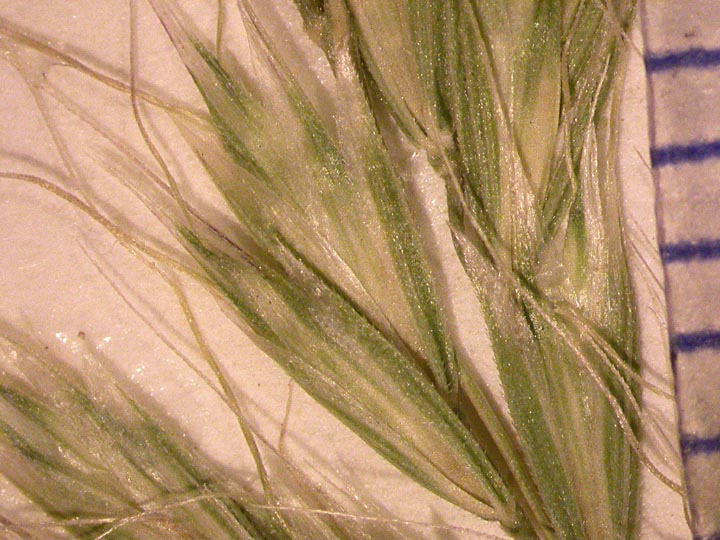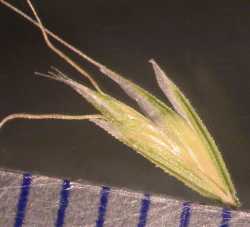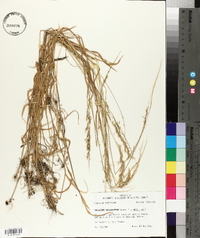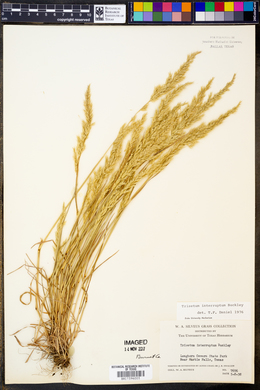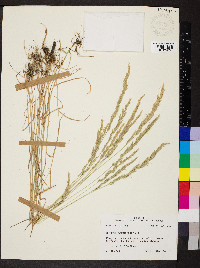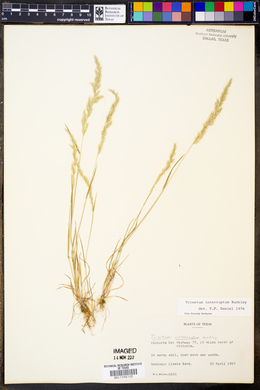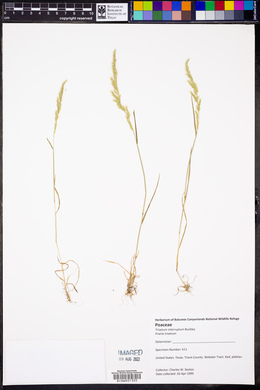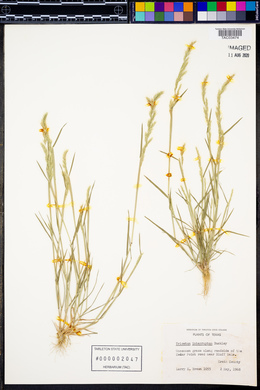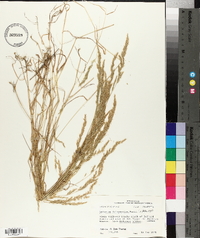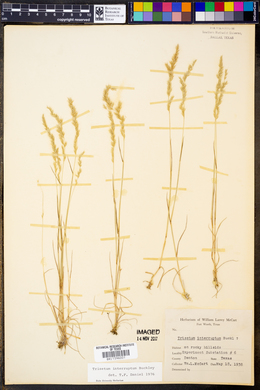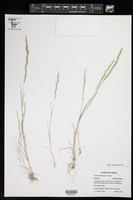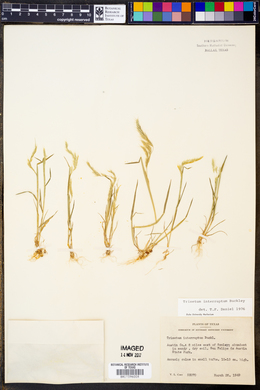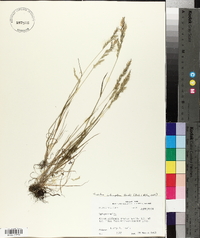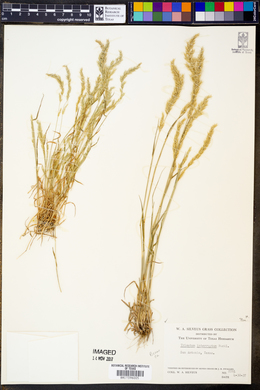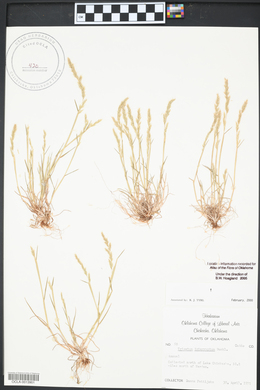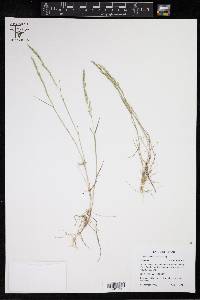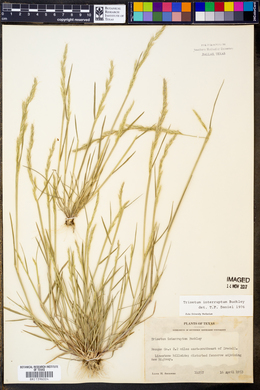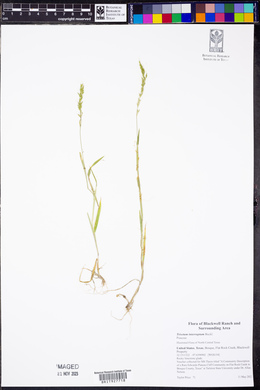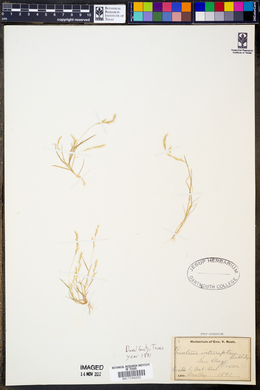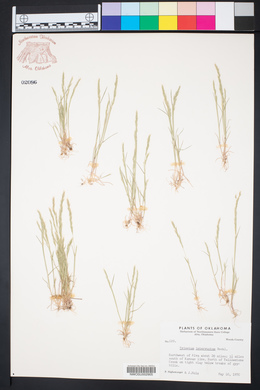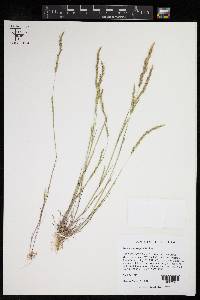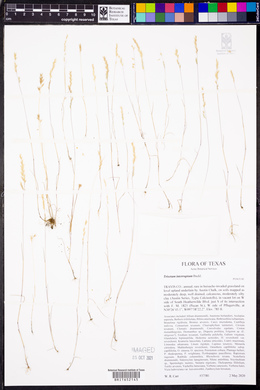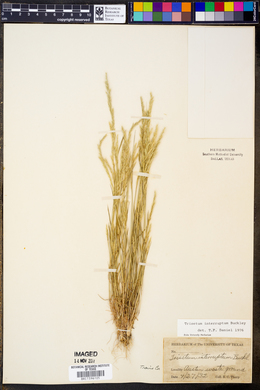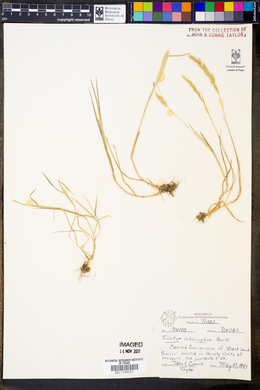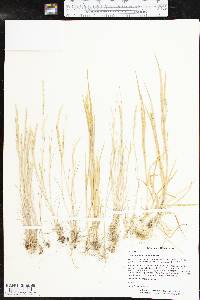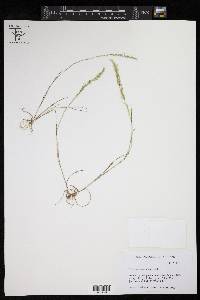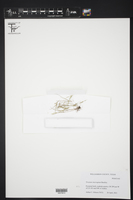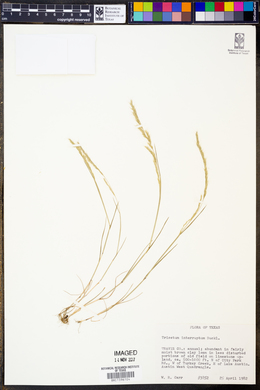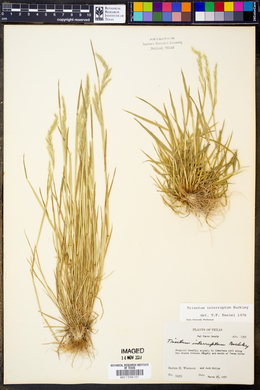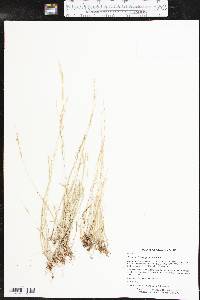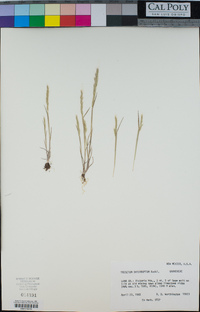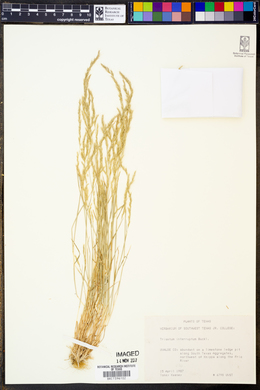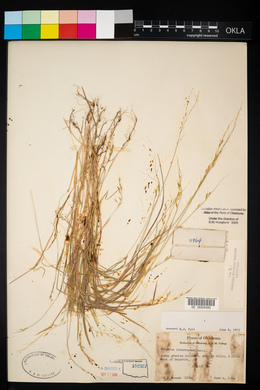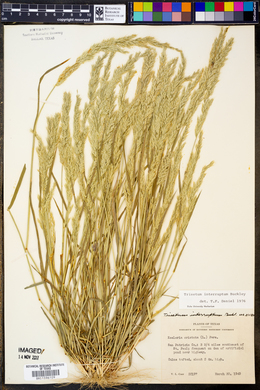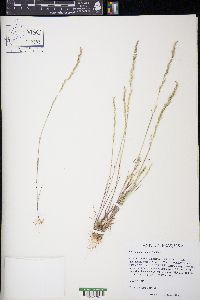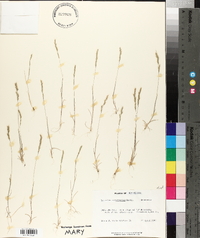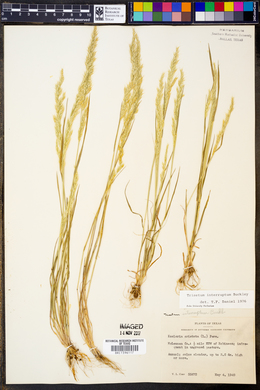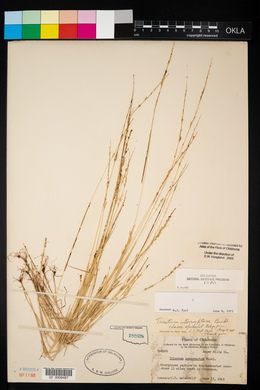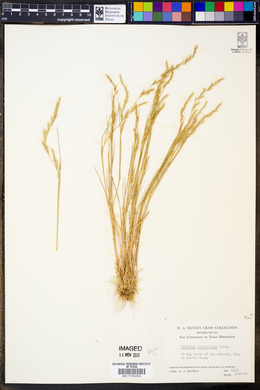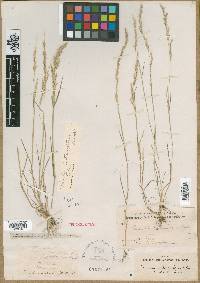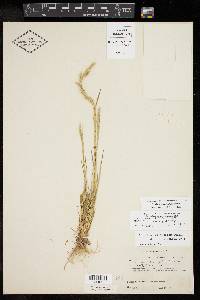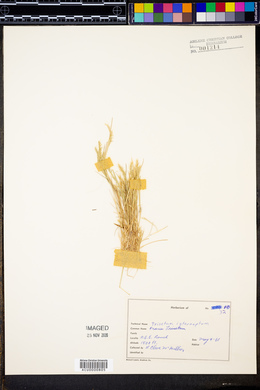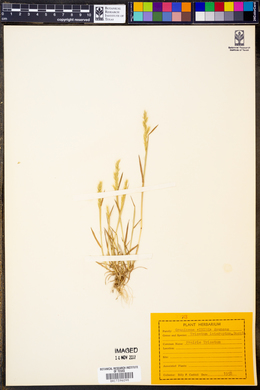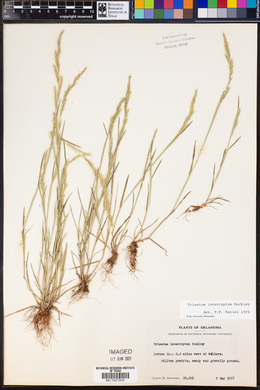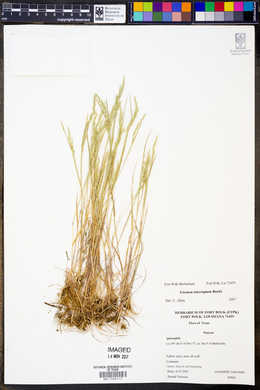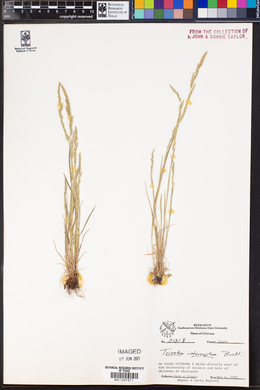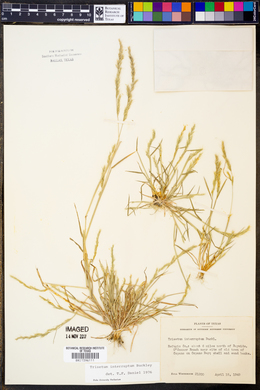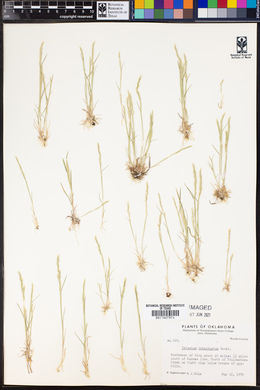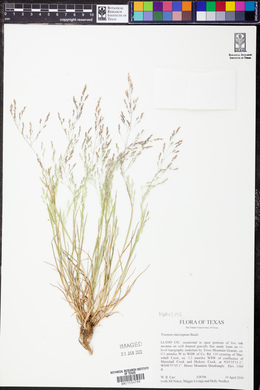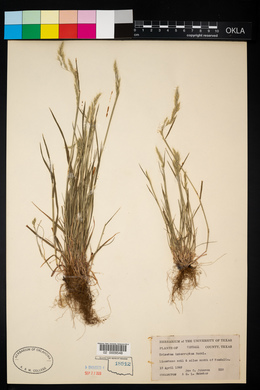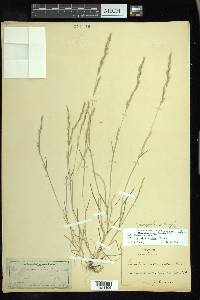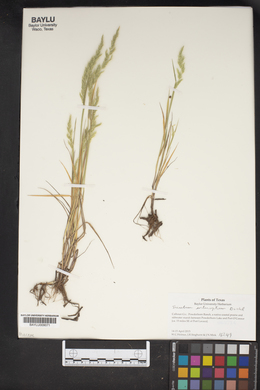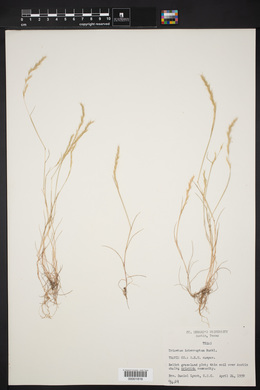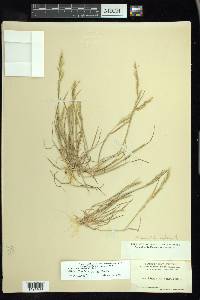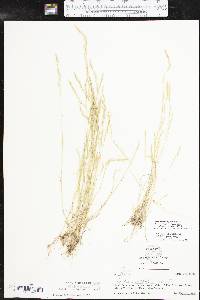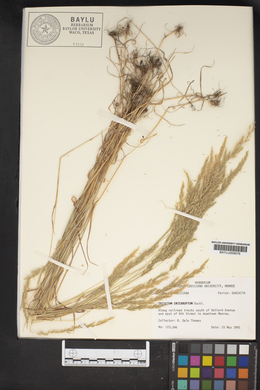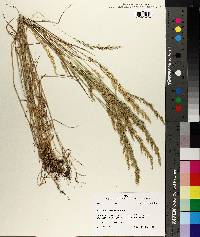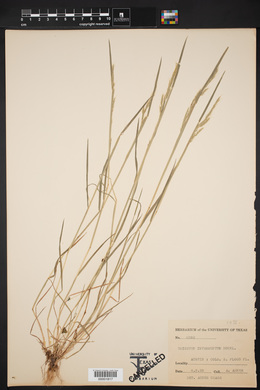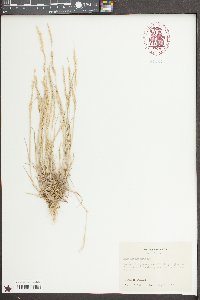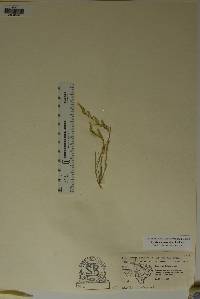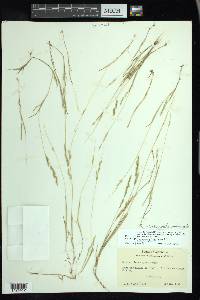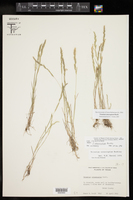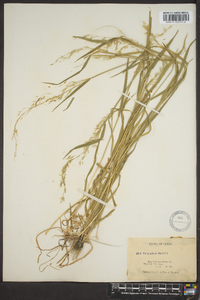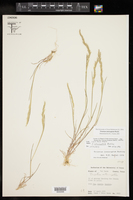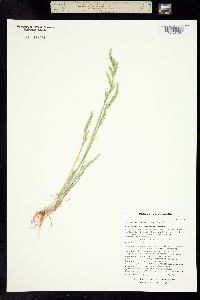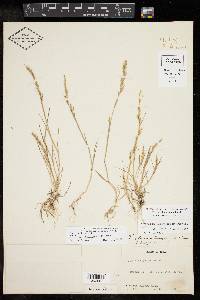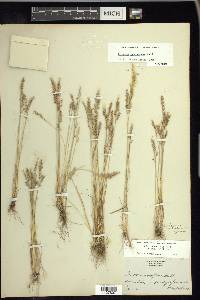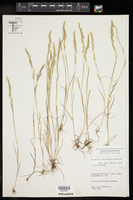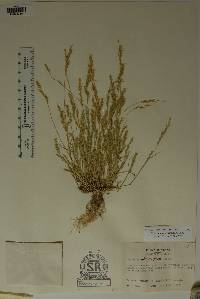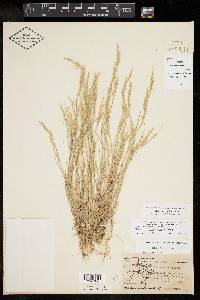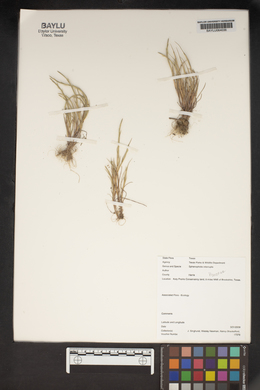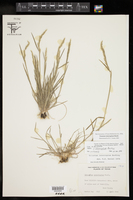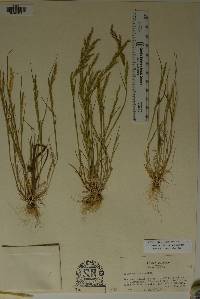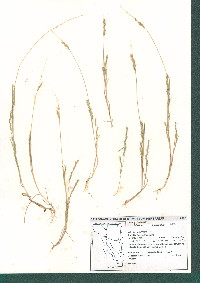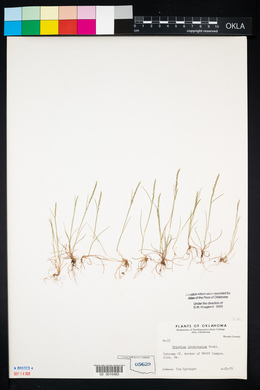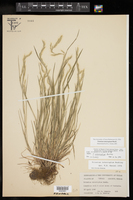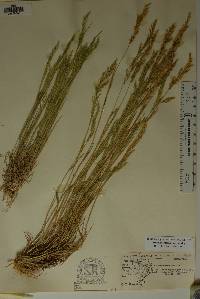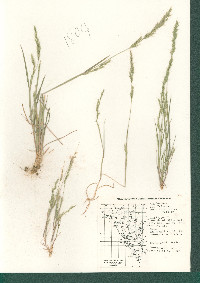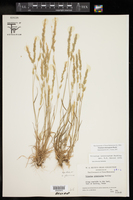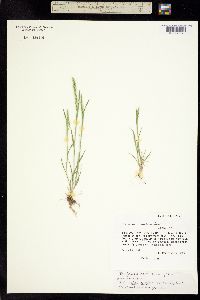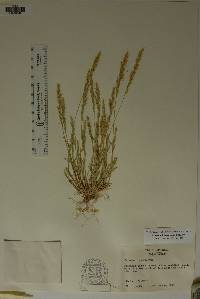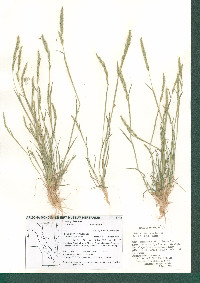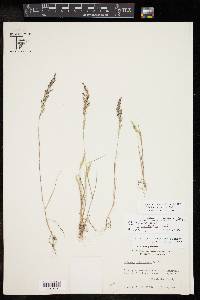Sphenopholis interrupta
|
|
|
|
Family: Poaceae
Prairie False Oat, more...prairie false oat, prairie trisetum, Prairie Trisetum
[Avena elongata Kunth, moreCalamagrostis longirostris Buckley, Sphenopholis hallii (Scribn.) Scribn., Trisetum elongatum (Kunth) Kunth, Trisetum hallii Scribn., Trisetum interruptum Buckl.] |
Plants annual, without sterile shoots; tufted. Culms (5)10-40(60) cm, erect or spreading, mostly glabrous, pilose below the nodes. Leaves basally concentrated; sheaths scabridulous or pilose; ligules 1-2.5 mm, truncate; blades 3-12 cm long, 1-4 mm wide, flat, folded, or involute distally when dry, ascending, glabrous or pubescent, margins frequently scattered-ciliate. Panicles 2-15 cm long, 0.3-1.5 cm wide, often interrupted, at least in the lower 1/3, green or tan; branches short, usually erect to appressed, the spikelets crowded. Spikelets 3.5-6 mm, often in pairs with 1 subsessile and 1 pedicellate, with 2-3 florets; disarticulation initially above the glumes, subsequently below; rachilla internodes usually 0.8-1 mm; rachilla hairs usually about 0.5 mm. Glumes subequal, 4-5 mm, about as long as the lowest lemmas, smooth or scattered-scabridulous; lower glumes 0.5-1 mm wide, lanceolate or elliptical, 3-veined, acuminate, sometimes apiculate; upper glumes about twice as wide as the lower glumes, elliptical or oblanceolate, acuminate; callus hairs 0.1-0.2(0.5) mm, sparse; lemmas 3-4.5 mm, usually glabrous, sometimes minutely pustulate-scabridulous, apices bifid, teeth to 1.7 mm, awned, awns usually 4-8 mm, arising from midlength to just below the teeth, geniculate, twisted basally (rarely 2-4 mm, straight, arcuate, or flexuous); paleas usually 2/3 as long as the lemmas, hyaline; anthers about 0.2 mm. Caryopses 2-3 mm, longitudinally striate, sometimes with a few hairs distally. 2n = 14. Trisetum interruptum grows in open, dry or moist soil in deserts, plains, arid shrublands, and riparian woodlands, from the southern United States into Mexico. It is often weedy. Dr. David Bogler, USDA NRCS PLANTS Database Annuals, Terrestrial, not aquatic, Stems nodes swollen or brittle, Stems erect or ascending, Stems caespitose, tufted, or clustered, Stems terete, round in cross section, or polygonal, Stem internodes hollow, Stems with inflorescence less than 1 m tall, Stems, culms, or scapes exceeding basal leaves, Leaves mostly basal, below middle of stem, Leaves mostly cauline, Leaves conspicuously 2-ranked, distichous, Leaves sheathing at base, Leaf sheath mostly open, or loose, Leaf sheath smooth, glabrous, Leaf sheath hairy, hispid or prickly, Leaf sheath and blade differentiated, Leaf blades linear, Leaf blades very narrow or filiform, less than 2 mm wide, Leaf blades 2-10 mm wide, Leaf blades mostly flat, Leaf blades mostly glabrous, Leaf blades more or less hairy, Ligule present, Ligule an unfringed eciliate membrane, Inflorescence terminal, Inflorescence a contracted panicle, narrowly paniculate, branches appressed or ascending, Inflorescence solitary, with 1 spike, fascicle, glomerule, head, or cluster per stem or culm, Inflorescence branches more than 10 to numerous, Flowers bisexual, Spikelets pedicellate, Spikelets laterally compressed, Spikelet less than 3 mm wide, Spikelets with 2 florets, Spikelets solitary at rachis nodes, Spikelets all alike and fertille, Spikelets bisexual, Spikelets disarticulating above the glumes, glumes persis tent, Spikelets disarticulating below the glumes, Rachilla or pedicel hairy, Glumes present, empty bracts, Glumes 2 clearly present, Glumes equal or subequal, Glumes equal to or longer than adjacent lemma, Glumes keeled or winged, Glumes 1 nerved, Glumes 3 nerved, Lemma similar in texture to glumes, Lemma 5-7 nerved, Lemma glabrous, Lemma apex dentate, 2-fid, Lemma distinctly awned, more than 2-3 mm, Lemma with 1 awn, Lemma awn less than 1 cm long, Lemma awn subapical or dorsal, Lemma awn once geniculate, bent once, Lemma margins thin, lying flat, Lemma straight, Callus or base of lemma evidently hairy, Callus hairs shorter than lemma, Palea present, well developed, Palea membranous, hyaline, Palea longer than lemma, Palea 2 nerved or 2 keeled, Stamens 3, Styles 2-fid, deeply 2-branched, Stigmas 2, Fruit - caryopsis.
FNA 2007, Gould 1980 Common Name: prairie false oat Duration: Annual Nativity: Native Lifeform: Graminoid General: Slender tufted annual grass with stems 10-40 cm, erect or spreading, mostly glabrous, pilose below the nodes. Vegetative: Blades basally concentrated, 3-12 cm long, 1-4 mm wide, flat or folded, involute distally when dry, ascending, margins frequently scattered-ciliate; ligules 1-2.5 mm, truncate; sheaths open, minutely roughened or pilose. Inflorescence: Terminal contracted panicles 2-15 cm long, 0.5-1.5 cm wide, often interrupted in lower third, green or tan; branches short, erect to appressed, crowded with spikelets; spikelets 3.5-6 mm, often in pairs with 1 subsessile, 1 pedicellate, with 2-3 florets; disarticulation initially above the glumes subsequently below; glumes subequal, 4-5 mm, smooth or minutely roughened; lemmas 4-5 mm, usually glabrous, tipped with slender, setaceous teeth, and awned from the back just below the teeth; lemma awns 5-8 mm long, typically twisted and twice-geniculate. Ecology: Found on open, dry ground to moist soils, on flats and in riparian woodlands from 3,000-5,000 ft (914-1524 m); flowers March-May. Distribution: s US from AZ to LA; south to MEX. Notes: Distinguished by being a slender annual grass topped with contracted panicles, the spikelets with 3-veined lower glumes, and the lemmas with delicate, genuculate, often reddish awns. Look also for dark bands at the nodes of the stems. Ethnobotany: Unknown Etymology: Sphenopholis is from Greek sphen for wedge and pholis for scale, referring to the shape of the upper glume,while interrupta means interrupted in some way. Synonyms: Trisetum interruptum Editor: SBuckley 2010, AHazelton 2015 |

